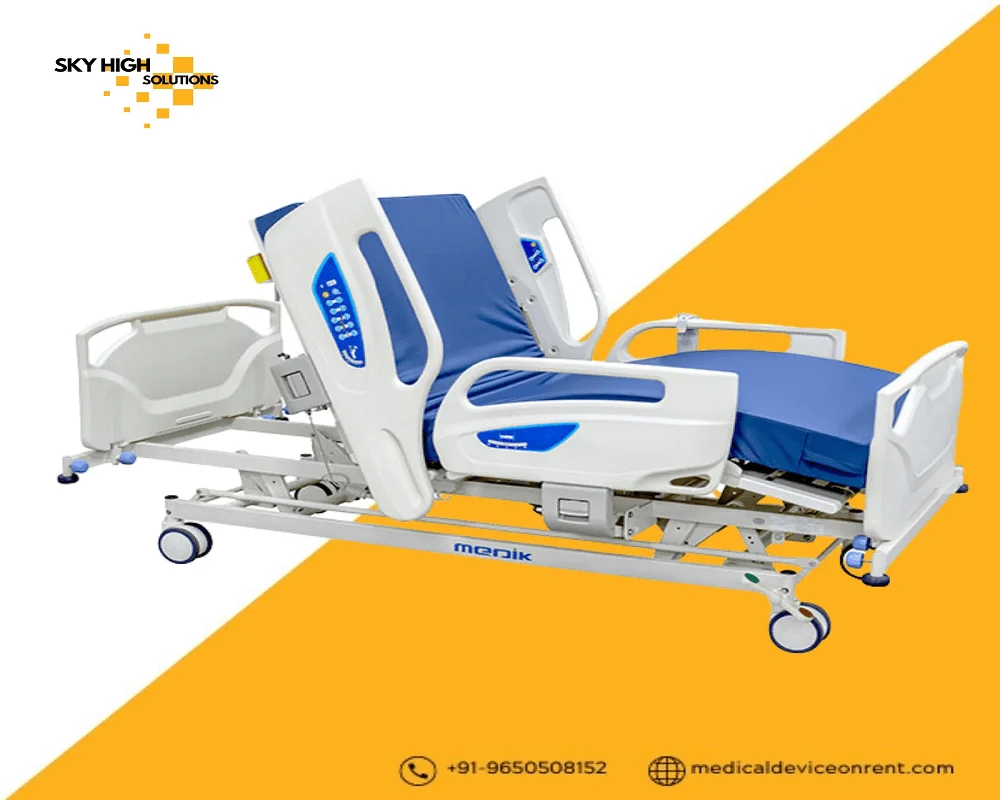Caring for a loved one at home can be overwhelming—especially if they have limited mobility or require advanced medical attention. Fortunately, electric hospital beds have transformed home care by providing comfort, convenience, and enhanced safety for both patients and caregivers. These beds offer adjustable positioning, side rails, and improved support compared to regular beds. However, to ensure the best outcomes, it’s important to use the bed correctly and safely. This comprehensive guide will help you manage an electric hospital bed with confidence and care.
Must Read: Air Mattress Rental in Gurugram
Why Choose an Electric Hospital Bed for Home Care?
Electric hospital bed are specially designed for individuals who spend long hours in bed due to surgery recovery, chronic illness, injury, or palliative care. Their adjustable features make caregiving easier and improve the patient’s quality of life.
Key Benefits:
Improved Comfort – Multiple positioning options help relieve pain, reduce pressure, and promote better sleep.
Ease of Caregiving – Height adjustments prevent caregiver strain during transfers or routine care.
Enhanced Safety – Side rails and locking wheels help prevent falls and accidents.
Must Read: Affordable Oxygen Concentrator on Rent in Gurgaon
Who Should Use an Electric Hospital Bed?
An electric hospital bed is ideal for:
-
Elderly individuals with reduced mobility
-
Patients recovering from surgeries or injuries
-
People with neurological conditions
-
Patients in palliative or long-term care
-
Those requiring frequent position changes to avoid bedsores
Safety Tips for Using an Electric Hospital Bed at Home
Even though these beds are designed with safety in mind, following best practices ensures optimal results for both the patient and caregiver.
1. Learn the Bed Controls Thoroughly
Understand how to use the remote control or panel for adjusting the head, leg, and bed height. Some beds come with emergency stop buttons or backup batteries in case of power failure.
Tip: Keep the user manual handy and ensure every caregiver is familiar with the controls.
2. Secure Side Rails and Lock Wheels
Side rails prevent patients from accidentally rolling out of bed. However, they must be fully raised and properly locked. Avoid partially raised rails—they can create gaps and pose entrapment risks.
-
Always lock the wheels after positioning the bed.
-
Double-check side rails before leaving the patient unattended.
3. Choose a Compatible Medical Mattress
The mattress is just as important as the bed frame. Use a pressure-relieving medical-grade mattress that fits perfectly. This reduces the risk of pressure ulcers, especially for bedridden patients.
4. Maintain a Clear and Safe Area Around the Bed
Keep the area around the bed free from:
- Electrical cords
- Loose rugs
- Clutter or sharp objects
If using medical devices like oxygen concentrators or IV stands, secure all wires away from walkways to prevent tripping.
5. Practice Safe Bed Transfers
Transfers are often when injuries happen. If your loved one can partially stand, adjust the bed so their feet touch the floor comfortably. Use a gait belt or seek assistance for stability.For patients who cannot assist during transfers, use a transfer hoist or get professional help to prevent injury.
6. Monitor and Adjust Bed Positioning
While elevated positions support breathing and digestion, leaving the bed inclined for long periods can cause the patient to slide down, leading to friction injuries.
-
Reposition the patient regularly.
-
Use pillows and wedges for support.
-
Avoid prolonged elevation unless recommended by a doctor.
7. Schedule Regular Maintenance
Like any electrical equipment, electric hospital beds require periodic inspections. Regularly check for:
- Frayed or damaged cords
- Faulty or unresponsive controls
- Noisy or stuck motorized parts
- Mattress sagging or damage
If you’ve rented the bed, contact your supplier for maintenance, repair, or emergency support.
Additional Comfort & Safety Tips
- Use soft, adjustable lighting near the bed to prevent night-time accidents
- Keep essentials within reach — water, remote, medication, and tissues
- Train all family members or caregivers in safe bed usage
- Always inform the patient before moving or adjusting the bed
Final Thoughts
An electric hospital bed can make a significant difference in home care—promoting comfort, safety, and dignity for patients while reducing physical strain on caregivers. However, proper usage is key. By following these safety tips—from learning the controls to maintaining the bed and monitoring patient positioning—you can provide effective and stress-free care at home.
If you’re considering renting a hospital bed, Visit Medical Device on Rent can assist with choosing the right model, installation, and maintenance — giving you complete peace of mind.
Read More Blogs:
Jumbo Oxygen Cylinder Explained: Capacity in Litres & Hours
Oxygen Cylinders: Types, Uses and Benefits for Medical Care

